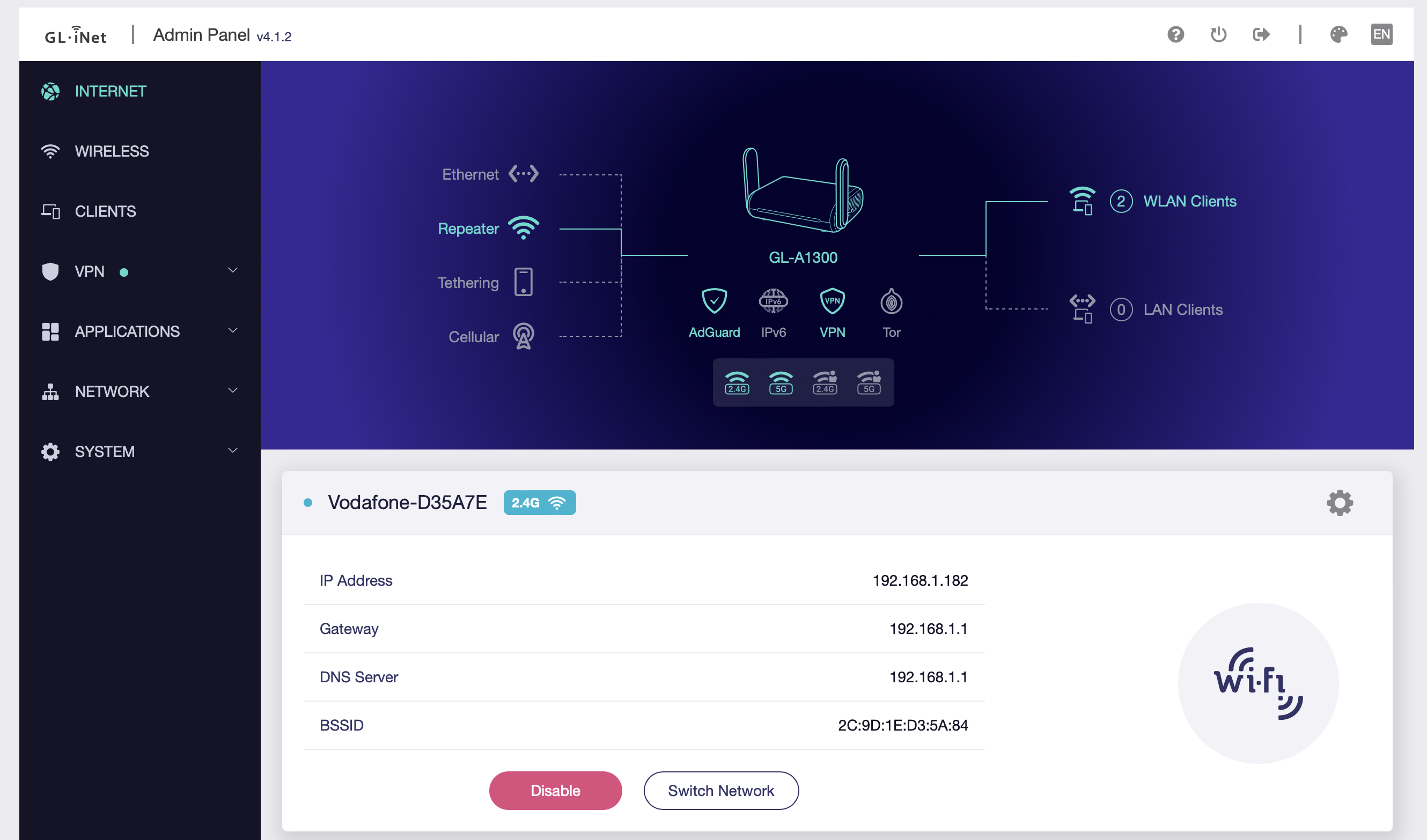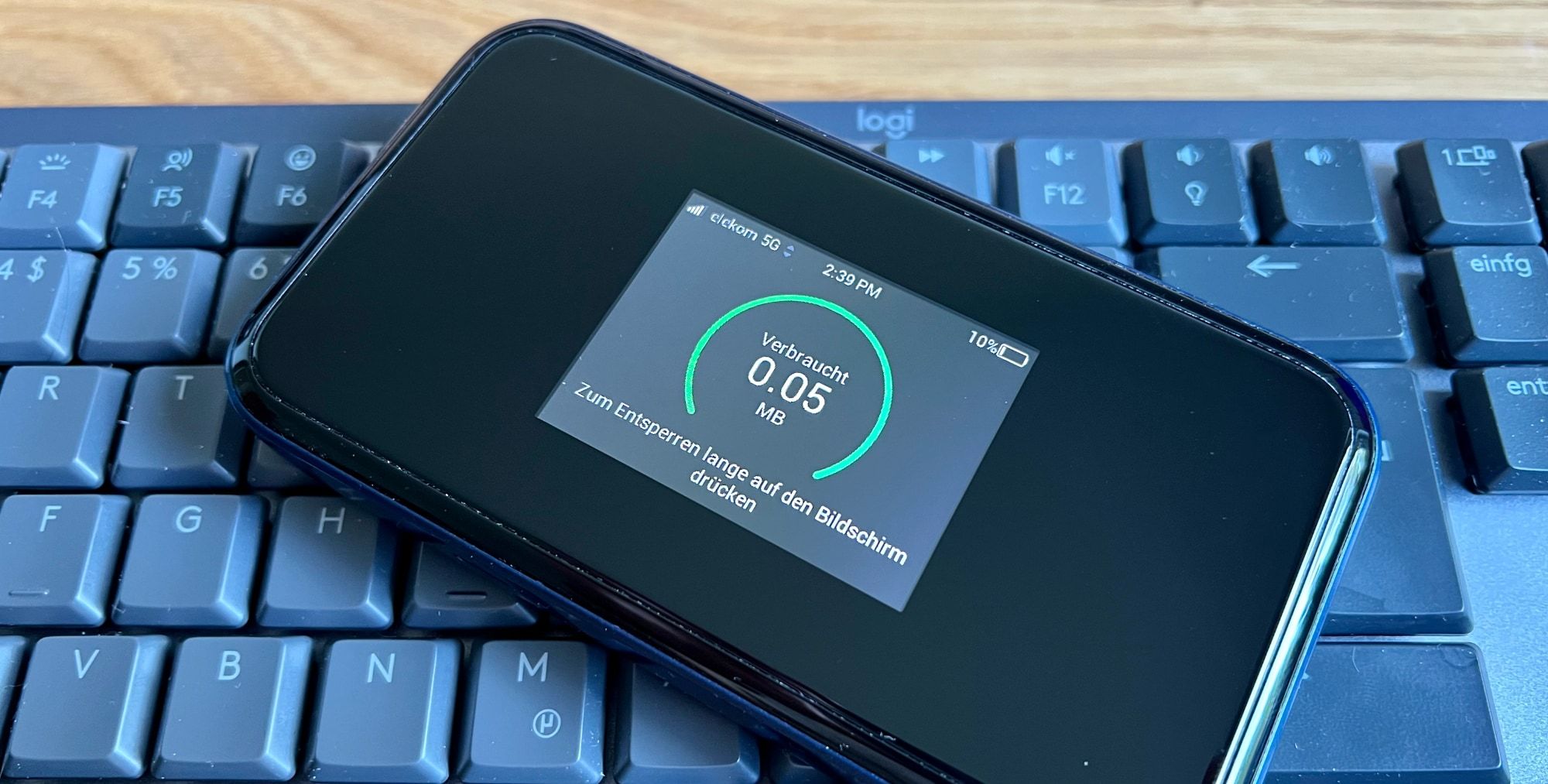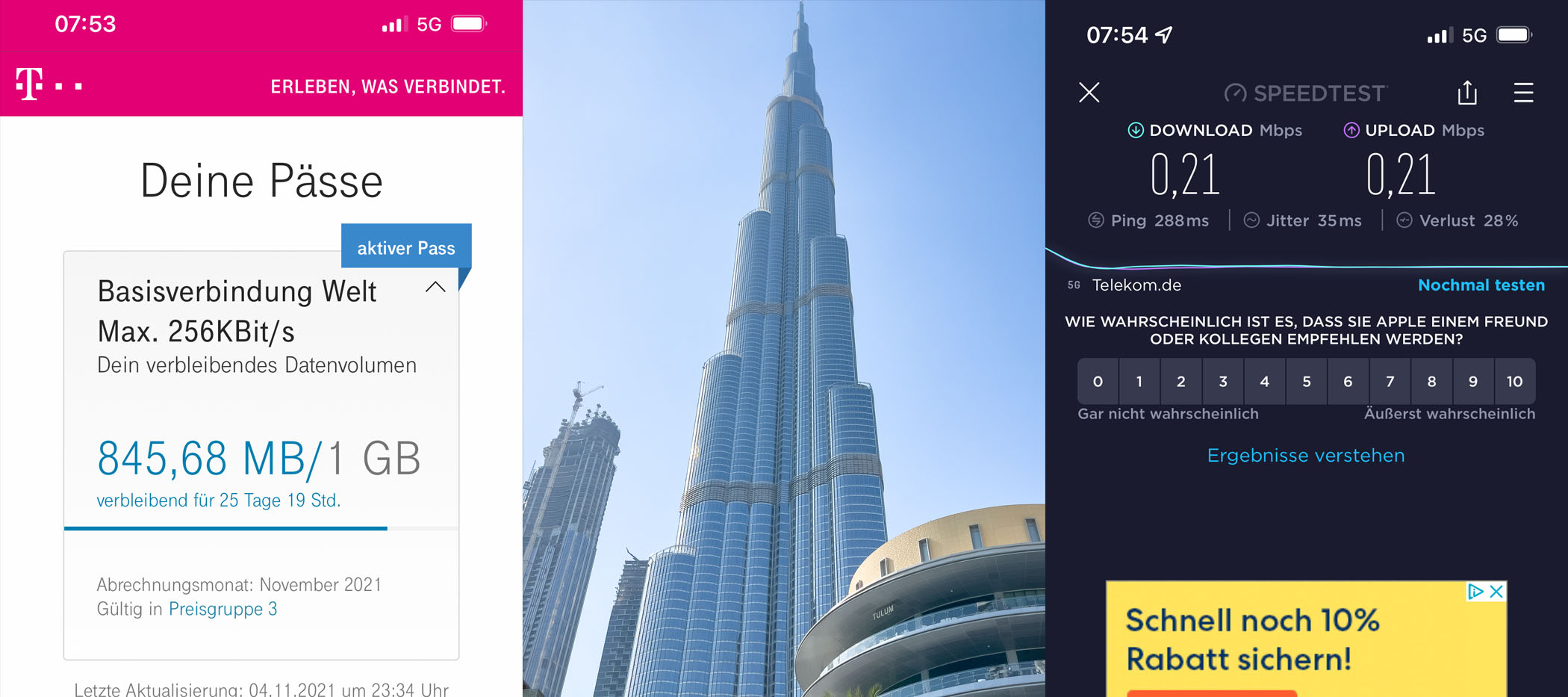To bridge a longer distance via WLAN, devolo offers a solution with GigaGate. I have compared it with the repeater from AVM.
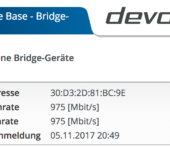
Configuration is simple: power both devices, press the configuration button and wait until the status LEDs indicate that the connection has been established. Then the satellite can be brought to its actual location.
As with all network solutions that are not based on traditional network cables, there is a difference between gross and net data rates for the WLAN bridge. Also, the advertised WLAN data rate of 2 GBit/s is only achieved under ideal conditions, even a concrete wall reduces the transmission speed between base and satellite. In my setup between 975 MBit/s and 1040 Mbit/s are reached, both in send and receive direction.
In my setup, a VDSL100 connection is forwarded via the WLAN bridge, and there is also a NAS on the main router, a Fritz!Box 7490. The DSL connection is forwarded without restrictions, the data rates to the NAS reach a good 40 MB/s - which is significantly better than with the previous solution with a AVM 1750E repeaterbut is still about 60 percent away from the possibilities of a directly laid Cat 5e gigabit cable.
As usual with 802.11ac connections, the data rate increases with several parallel TCP connections - correspondingly, the data rate increases when several streams or files are transmitted simultaneously. There is also no significant delay when playing, the ping remains good.
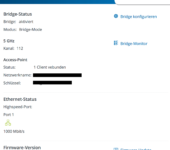
From this, a firmware update can also be carried out via the interface. For me the automatic update did not work, I had to download the update file manually, the installation was problem-free afterwards.
However, the well-functioning solution from devolo also has disadvantages: in addition to the power consumption, which for base and satellite adds up to a good 20 euros per year (depending on the power provider), there is also the price of a good 220 euros, which is currently at Amazon for the GigaGate starter kit.
Update from 03.09.2022: Still in use
The Devolo Gigagate Bridge is still in use after almost five years. The transfer rate has leveled off and is sufficient to completely transfer the VDSL connection, which delivers 292 Mbps at best times. The ping is at a good 13 ms for the entire distance (MacBook Pro -> Fritz! Repeater 1750E -> devolo Gigagate -> FritzBox 7590 on Telekom connection with super vectoringwhich also provides the maximum bandwidth here).
Currently, you can buy the devolo Gigagate Bridge for around 180,-€ at Amazon.de, so far it was one of the most sustainable IT purchases I have made. Even though there are newer bridge solutions with WiFi 6E, the devolo model is still solid and competitive.
